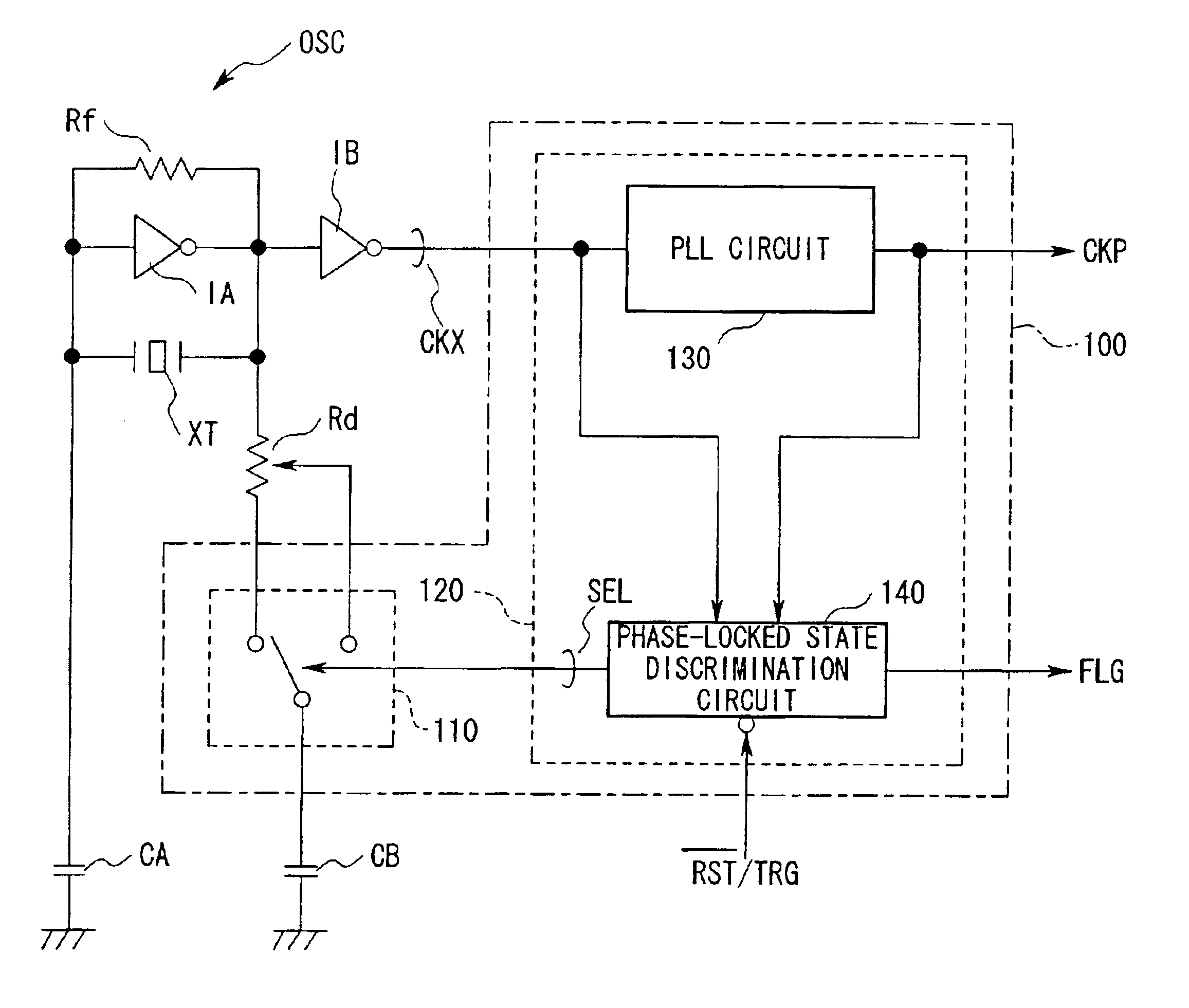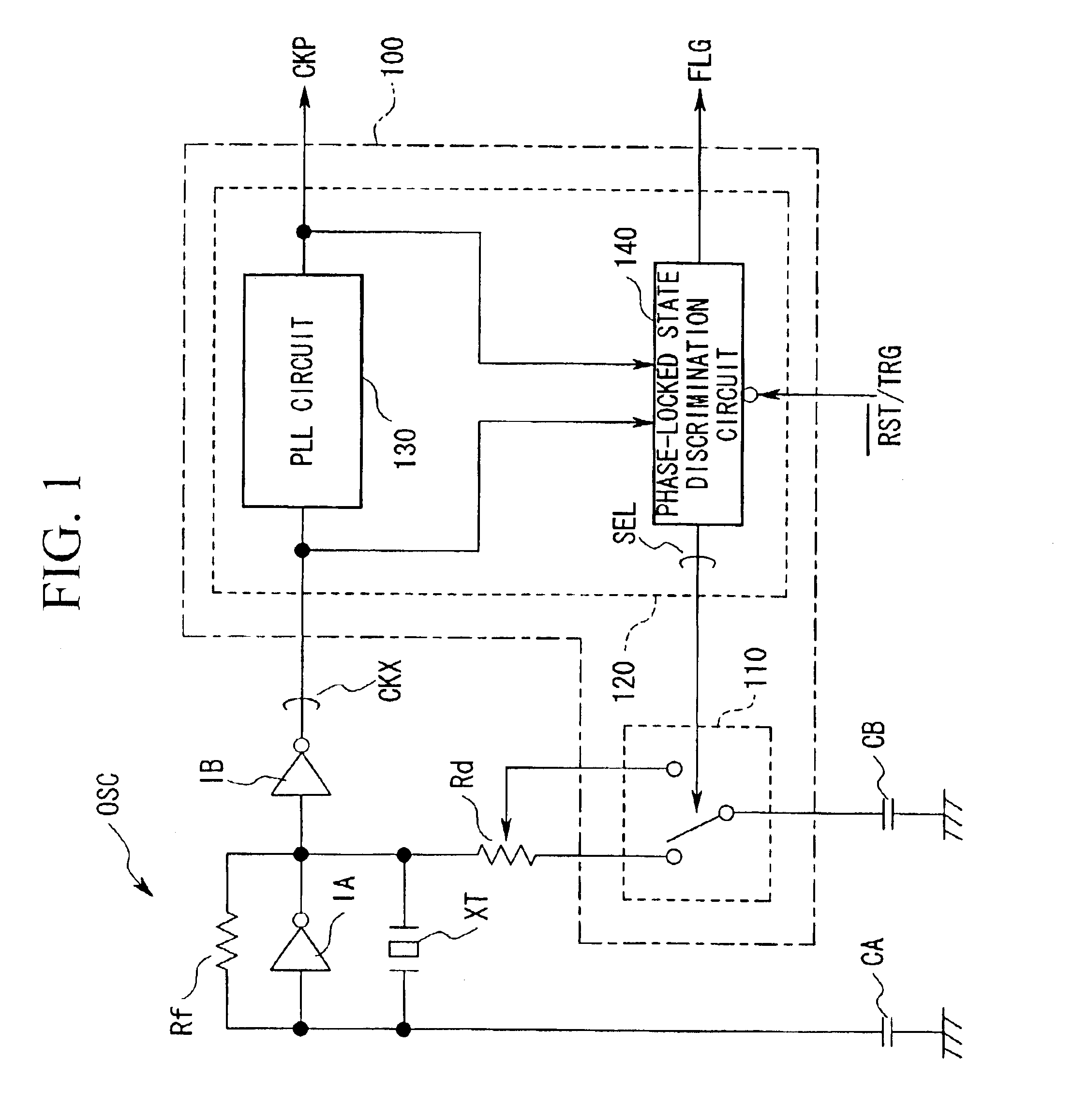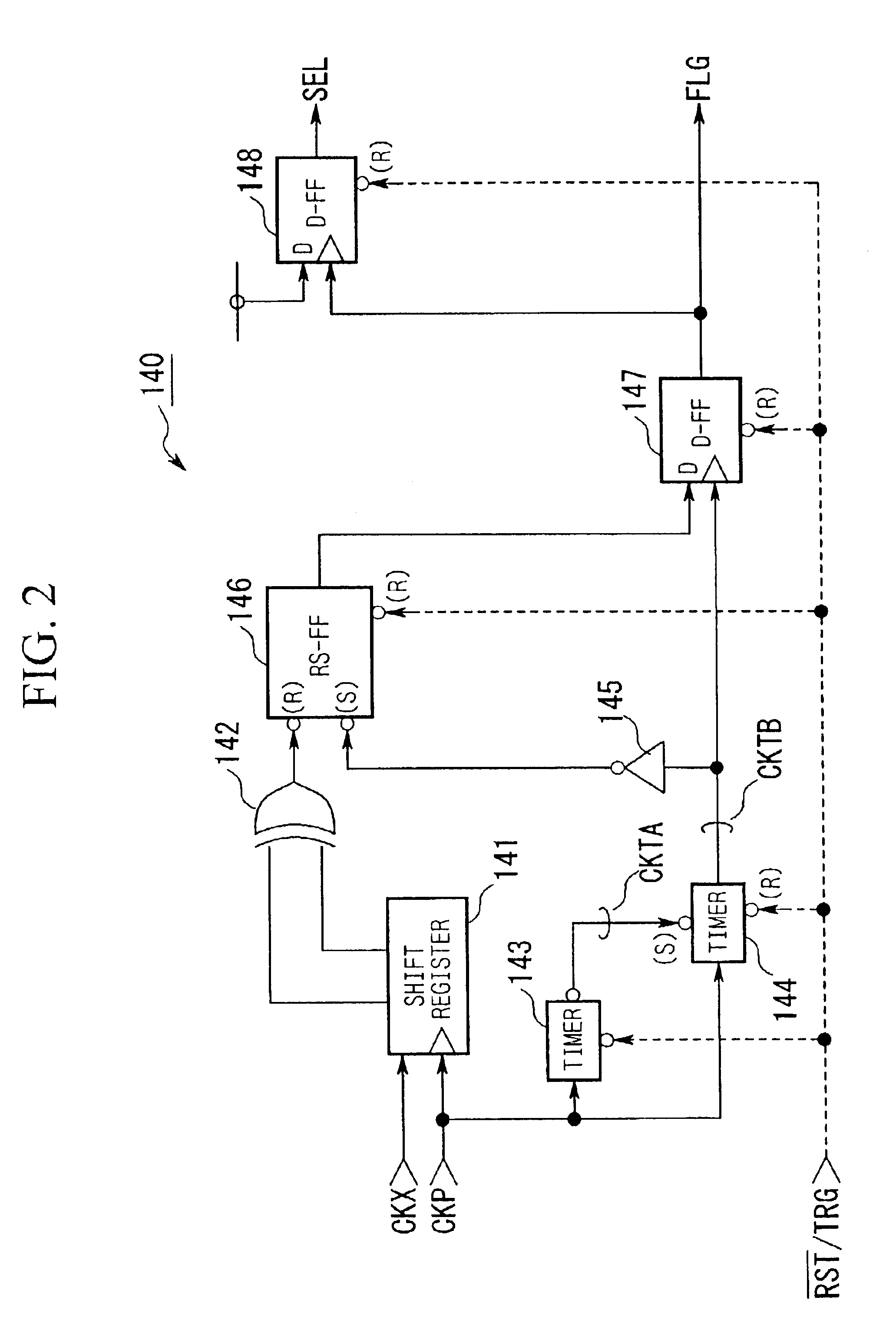Oscillation state discrimination circuit and oscillation control circuit adapted to oscillation circuit
- Summary
- Abstract
- Description
- Claims
- Application Information
AI Technical Summary
Benefits of technology
Problems solved by technology
Method used
Image
Examples
first embodiment
1. First Embodiment
[0066]FIG. 1 is a circuit diagram including circuit blocks in which an oscillation control circuit is adapted to an oscillation circuit in accordance with a first embodiment of the invention. That is, an oscillation control circuit 100 controls an oscillation state of an oscillation circuit OSC by switching over a damping resistance Rd, wherein it comprises a switch 110 and an oscillation state discrimination circuit 120, which further comprises a PLL (Phase-Locked Loop) circuit 130 and a phase-locked state discrimination circuit 140. The configuration of the oscillation circuit OSC shown in FIG. 1 is basically identical to that of the aforementioned oscillation circuit shown in FIG. 13, wherein parts identical to those shown in FIG. 13 are designated by the same reference numerals; hence, the detailed description thereof will be omitted as necessary, whereas the switch 110 corresponding to the aforementioned switch SW is used as a constituent element of the oscil...
second embodiment
2. Second Embodiment
[0100]Next, a second embodiment will be described in detail, wherein the second embodiment is basically similar to the first embodiment except that the phase-locked state discrimination circuit 140 shown in FIGS. 1 and 2 is replaced with a discrimination circuit 150 shown in FIG. 6. Compared with the phase-locked state discrimination circuit 140 of FIG. 2, the discrimination circuit 150 of FIG. 6 further comprises a timer 151 and a NOR circuit 152 (having negated inputs), wherein parts identical to those shown in FIG. 2 are designated by the same reference numerals, and the description thereof will be omitted as necessary. Specifically, the aforementioned signal CKTB output from the timer 144 is supplied to a clock terminal of the timer 151, an output terminal of which is connected to the clock terminal of the D flip-flop 148. In addition, the aforementioned signal FLG output from the D flip-flop 147 is supplied to a first input terminal of the NOR circuit 152, t...
third embodiment
3. Third Embodiment
[0109]Next, a third embodiment will be described in detail. In the first and second embodiments, the damping resistance Rd is changed over upon discrimination whether or not the oscillation circuit OSC performs oscillation in a stable manner. The third embodiment is characterized in that a prescribed time period is measured using a timer with respect to the clock signal CKP so as to restore the damping resistance Rd to original resistance, wherein the timer is initialized (or reset) if oscillation is not stabilized so that the timer performs again time measurement.
[0110]The third embodiment is basically similar to the first embodiment except that the phase-locked state discrimination circuit 140 of the oscillation control circuit 100 shown in FIG. 1 is replaced with a phase-locked state discrimination circuit 200 shown in FIG. 8, wherein a shift register 201 and a decode circuit 202 may substantially match the aforementioned shift register 141 and the exclusive-or...
PUM
 Login to View More
Login to View More Abstract
Description
Claims
Application Information
 Login to View More
Login to View More - R&D
- Intellectual Property
- Life Sciences
- Materials
- Tech Scout
- Unparalleled Data Quality
- Higher Quality Content
- 60% Fewer Hallucinations
Browse by: Latest US Patents, China's latest patents, Technical Efficacy Thesaurus, Application Domain, Technology Topic, Popular Technical Reports.
© 2025 PatSnap. All rights reserved.Legal|Privacy policy|Modern Slavery Act Transparency Statement|Sitemap|About US| Contact US: help@patsnap.com



